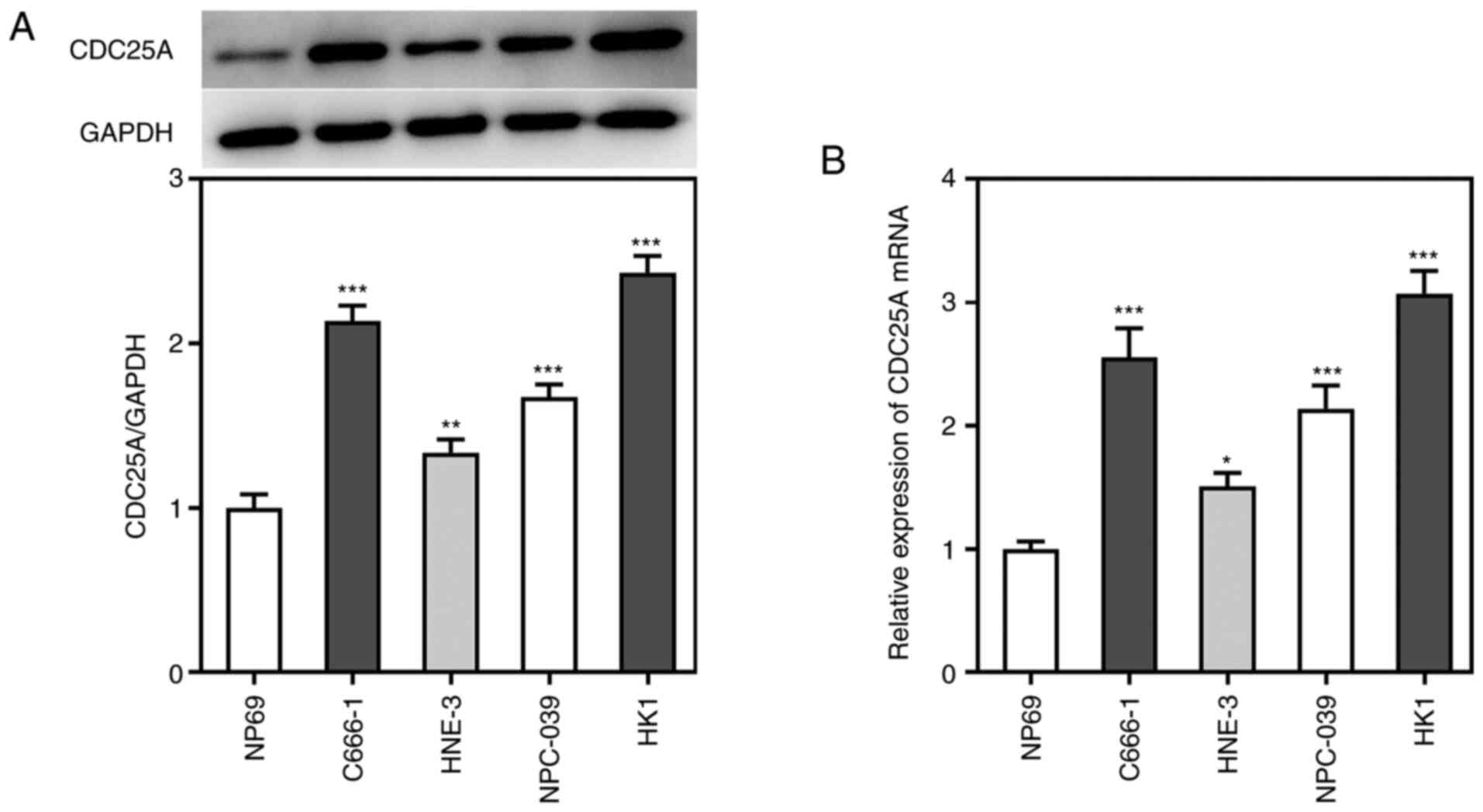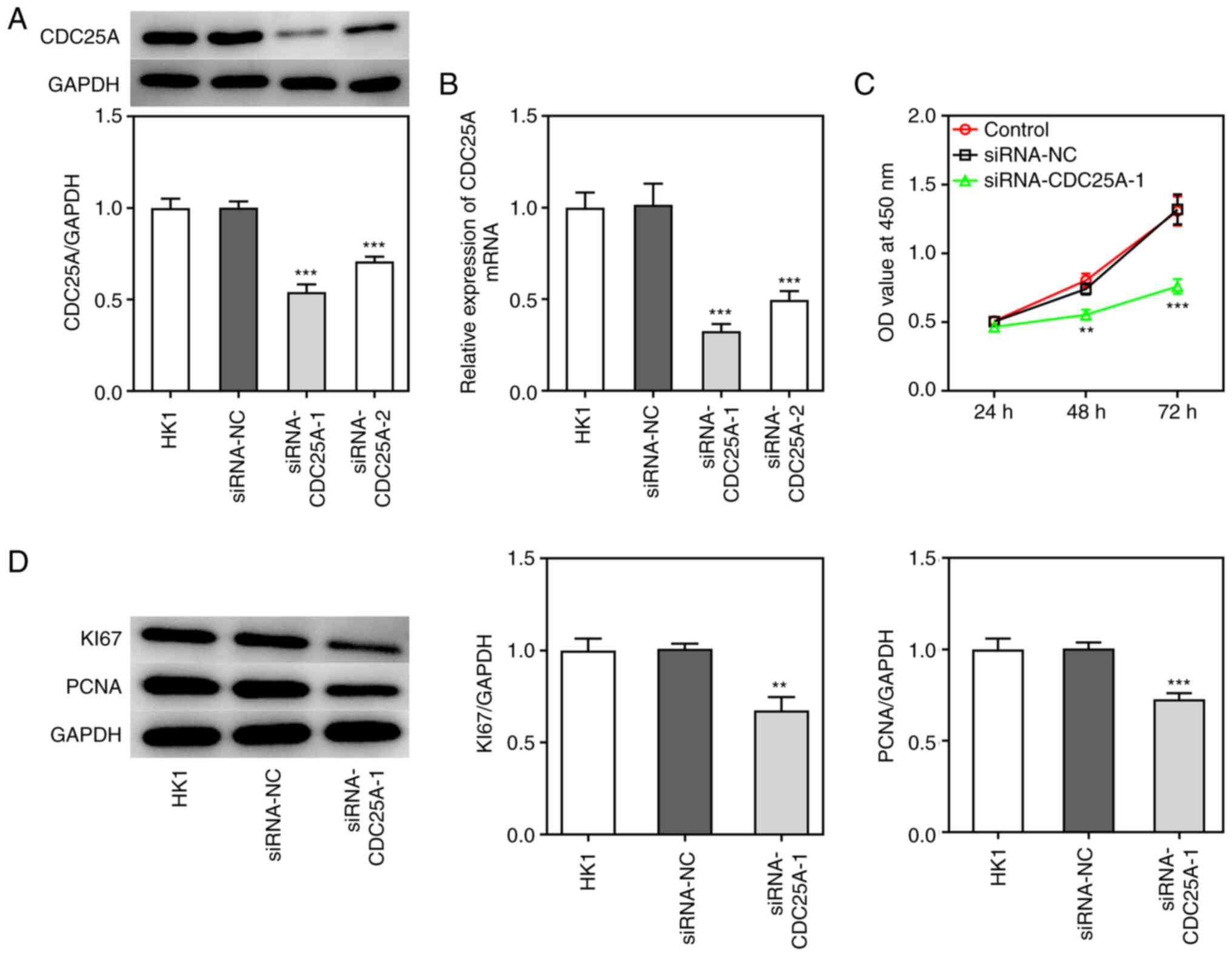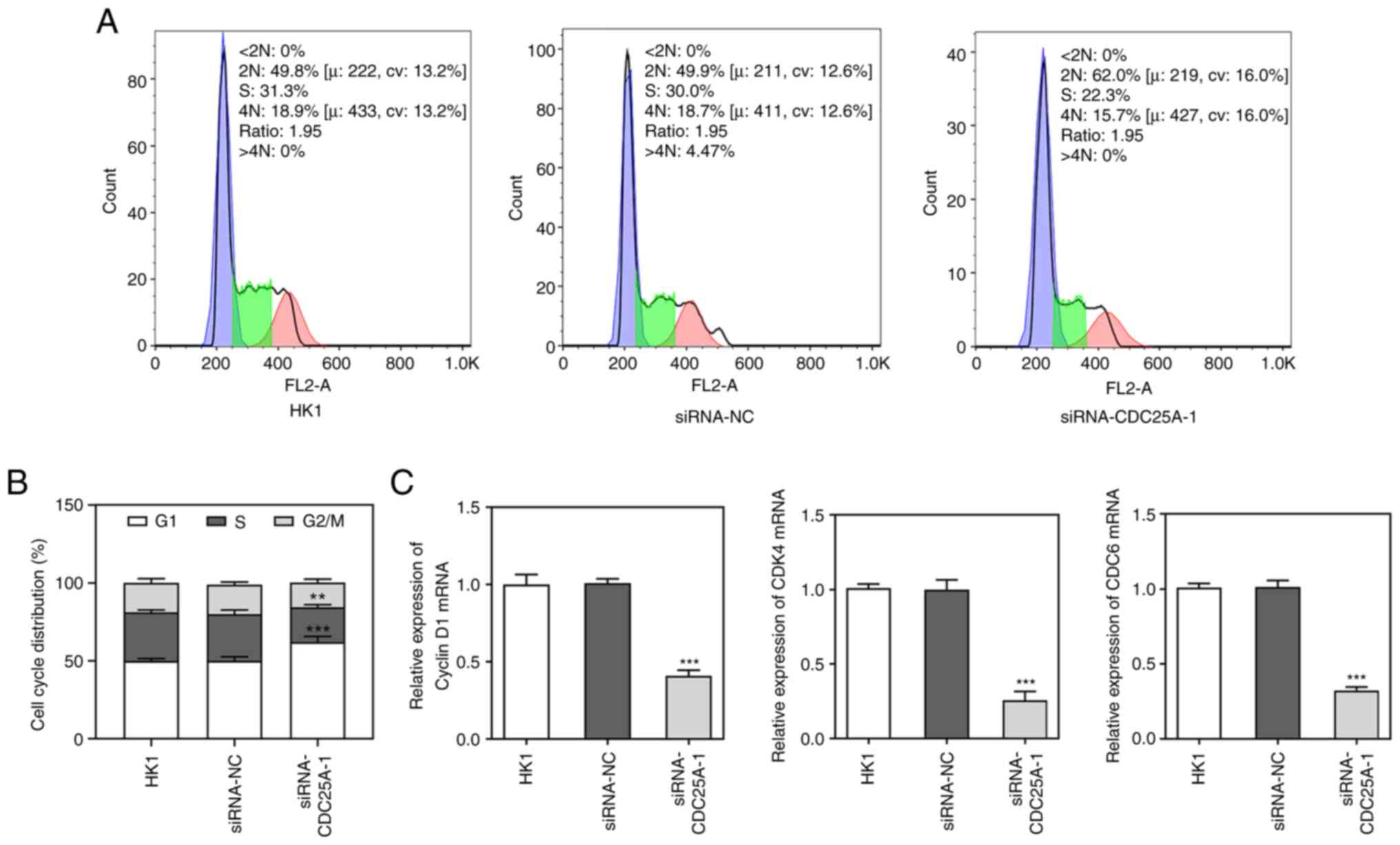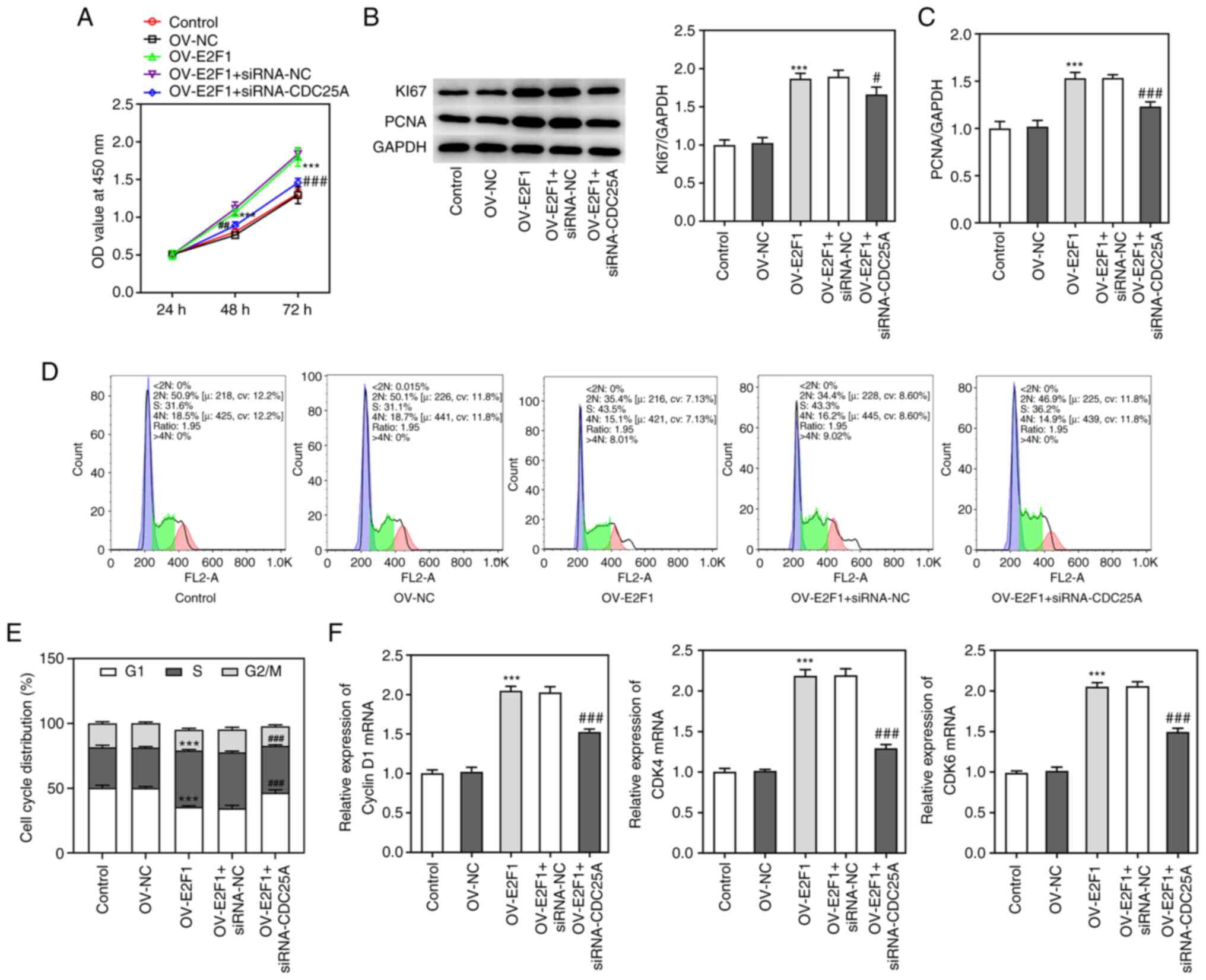|
1
|
Zhang P, He Q, Lei Y, Li Y, Wen X, Hong M,
Zhang J, Ren X, Wang Y, Yang X, et al: m6A-mediated
ZNF750 repression facilitates nasopharyngeal carcinoma progression.
Cell Death Dis. 9:11692018. View Article : Google Scholar : PubMed/NCBI
|
|
2
|
Chow JC, Ngan RK, Cheung KM and Cho WC:
Immunotherapeutic approaches in nasopharyngeal carcinoma. Expert
Opin Biol Ther. 19:1165–1172. 2019. View Article : Google Scholar : PubMed/NCBI
|
|
3
|
Zheng ZQ, Li ZX, Zhou GQ, Lin L, Zhang LL,
Lv JW, Huang XD, Liu RQ, Chen F, He XJ, et al: Long noncoding RNA
FAM225A promotes nasopharyngeal carcinoma tumorigenesis and
metastasis by acting as ceRNA to sponge miR-590-3p/miR-1275 and
upregulate ITGB3. Cancer Res. 79:4612–4626. 2019. View Article : Google Scholar : PubMed/NCBI
|
|
4
|
Lee HM, Okuda KS, González FE and Patel V:
Current perspectives on nasopharyngeal carcinoma. Adv Exp Med Biol.
1164:11–34. 2019. View Article : Google Scholar : PubMed/NCBI
|
|
5
|
Guo Y, Zhai J, Zhang J, Ni C and Zhou H:
Improved radiotherapy sensitivity of nasopharyngeal carcinoma cells
by miR-29-3p targeting COL1A1 3′-UTR. Med Sci Monit. 25:3161–3169.
2019. View Article : Google Scholar : PubMed/NCBI
|
|
6
|
Brenner AK, Reikvam H, Lavecchia A and
Bruserud Ø: Therapeutic targeting the cell division cycle 25
(CDC25) phosphatases in human acute myeloid leukemia-the
possibility to target several kinases through inhibition of the
various CDC25 isoforms. Molecules. 19:18414–18447. 2014. View Article : Google Scholar : PubMed/NCBI
|
|
7
|
Lin TC, Lin PL, Cheng YW, Wu TC, Chou MC,
Chen CY and Lee H: MicroRNA-184 deregulated by the MicroRNA-21
promotes tumor malignancy and poor outcomes in non-small cell lung
cancer via targeting CDC25A and c-Myc. Ann Surg Oncol. 22 (Suppl
3):S1532–S1539. 2015. View Article : Google Scholar : PubMed/NCBI
|
|
8
|
Ding FN, Gao BH, Wu X, Gong CW, Wang WQ
and Zhang SM: miR-122-5p modulates the radiosensitivity of cervical
cancer cells by regulating cell division cycle 25A (CDC25A). FEBS
Open Bio. 9:1869–1879. 2019. View Article : Google Scholar : PubMed/NCBI
|
|
9
|
Pu L, Su L and Kang X: The efficacy of
cisplatin on nasopharyngeal carcinoma cells may be increased via
the downregulation of fibroblast growth factor receptor 2. Int J
Mol Med. 44:57–66. 2019.PubMed/NCBI
|
|
10
|
Li MY, Liu JQ, Chen DP, Li ZY, Qi B, He L,
Yu Y, Yin WJ, Wang MY and Lin L: Radiotherapy induces cell cycle
arrest and cell apoptosis in nasopharyngeal carcinoma via the ATM
and Smad pathways. Cancer Biol Ther. 18:681–693. 2017. View Article : Google Scholar : PubMed/NCBI
|
|
11
|
Denechaud PD, Fajas L and Giralt A: E2F1,
a novel regulator of metabolism. Front Endocrinol (Lausanne).
8:3112017. View Article : Google Scholar : PubMed/NCBI
|
|
12
|
Shen C, Li J, Chang S and Che G:
Advancement of E2F1 in common tumors. Zhongguo Fei Ai Za Zhi.
23:921–926. 2020.(In Chinese). PubMed/NCBI
|
|
13
|
Farra R, Dapas B, Grassi M, Benedetti F
and Grassi G: E2F1 as a molecular drug target in ovarian cancer.
Expert Opin Ther Targets. 23:161–164. 2019. View Article : Google Scholar : PubMed/NCBI
|
|
14
|
Bi XC, Pu XY, Liu JM and Huang S: Effect
of transcription factor E2F1 expression on the invasion of prostate
cancer. Zhonghua Yi Xue Za Zhi. 97:2856–2859. 2017.(In Chinese).
PubMed/NCBI
|
|
15
|
Godoy PRDV, Donaires FS, Montaldi APL and
Sakamoto-Hojo ET: Anti-proliferative effects of E2F1 suppression in
glioblastoma cells. Cytogenet Genome Res. 161:372–381. 2021.
View Article : Google Scholar : PubMed/NCBI
|
|
16
|
Liu P, Zhang X, Li Z, Wei L, Peng Q, Liu
C, Wu Y, Yan Q and Ma J: A significant role of transcription
factors E2F in inflammation and tumorigenesis of nasopharyngeal
carcinoma. Biochem Biophys Res Commun. 524:816–824. 2020.
View Article : Google Scholar : PubMed/NCBI
|
|
17
|
Wang X, Nie P and Zhu D: LncRNA HOXA10-AS
activated by E2F1 facilitates proliferation and migration of
nasopharyngeal carcinoma cells through sponging miR-582-3p to
upregulate RAB31. Am J Rhinol Allergy. 36:348–359. 2022. View Article : Google Scholar : PubMed/NCBI
|
|
18
|
Livak KJ and Schmittgen TD: Analysis of
relative gene expression data using real-time quantitative PCR and
the 2(−Delta Delta C(T)) method. Methods. 25:402–408. 2001.
View Article : Google Scholar : PubMed/NCBI
|
|
19
|
Ru Lee W, Chen CC, Liu S and Safe S:
17beta-estradiol (E2) induces cdc25A gene expression in breast
cancer cells by genomic and non-genomic pathways. J Cell Biochem.
99:209–220. 2006. View Article : Google Scholar : PubMed/NCBI
|
|
20
|
Xiao Z and Chen Z: Deciphering
nasopharyngeal carcinoma pathogenesis via proteomics. Expert Rev
Proteomics. 16:475–485. 2019. View Article : Google Scholar : PubMed/NCBI
|
|
21
|
Qin H and Liu W: MicroRNA-99a-5p
suppresses breast cancer progression and cell-cycle pathway through
downregulating CDC25A. J Cell Physiol. 234:3526–3537. 2019.
View Article : Google Scholar : PubMed/NCBI
|
|
22
|
Sun Y, Li S, Yang L, Zhang D, Zhao Z, Gao
J and Liu L: CDC25A facilitates chemo-resistance in ovarian cancer
multicellular spheroids by promoting E-cadherin expression and
arresting cell cycles. J Cancer. 10:2874–2884. 2019. View Article : Google Scholar : PubMed/NCBI
|
|
23
|
Yin W, Xu J, Li C, Dai X, Wu T and Wen J:
Circular RNA circ_0007142 facilitates colorectal cancer progression
by modulating CDC25A expression via miR-122-5p. Onco Targets Ther.
13:3689–3701. 2020. View Article : Google Scholar : PubMed/NCBI
|
|
24
|
Jiang T and Cheng H: miR-34a-5p blocks
cervical cancer growth and migration by downregulating CDC25A. J
BUON. 26:1768–1774. 2021.PubMed/NCBI
|
|
25
|
Liu P, Xia P, Fu Q, Liu C, Luo Q, Cheng L,
Yu P, Qin T and Zhang H: miR-199a-5p inhibits the proliferation of
hepatocellular carcinoma cells by regulating CDC25A to induce cell
cycle arrest. Biochem Biophys Res Commun. 571:96–103. 2021.
View Article : Google Scholar : PubMed/NCBI
|
|
26
|
Sadeghi H, Golalipour M, Yamchi A,
Farazmandfar T and Shahbazi M: CDC25A pathway toward tumorigenesis:
Molecular targets of CDC25A in cell-cycle regulation. J Cell
Biochem. 120:2919–2928. 2019. View Article : Google Scholar : PubMed/NCBI
|
|
27
|
Shen T and Huang S: The role of Cdc25A in
the regulation of cell proliferation and apoptosis. Anticancer
Agents Med Chem. 12:631–639. 2012. View Article : Google Scholar : PubMed/NCBI
|
|
28
|
Sun X and Kaufman PD: Ki-67: More than a
proliferation marker. Chromosoma. 127:175–186. 2018. View Article : Google Scholar : PubMed/NCBI
|
|
29
|
Worby CA and Dixon JE: PTEN. Annu Rev
Biochem. 83:641–669. 2014. View Article : Google Scholar : PubMed/NCBI
|
|
30
|
Wang Z, Wang Y, Wang S, Meng X, Song F,
Huo W, Zhang S, Chang J, Li J, Zheng B, et al: Coxsackievirus A6
induces cell cycle arrest in G0/G1 phase for viral production.
Front Cell Infect Microbiol. 8:2792018. View Article : Google Scholar : PubMed/NCBI
|
|
31
|
Ditano JP, Sakurikar N and Eastman A:
Activation of CDC25A phosphatase is limited by CDK2/cyclin
A-mediated feedback inhibition. Cell Cycle. 20:1308–1319. 2021.
View Article : Google Scholar : PubMed/NCBI
|
|
32
|
Ma Y, Wang R, Lu H, Li X, Zhang G, Fu F,
Cao L, Zhan S, Wang Z, Deng Z, et al: B7-H3 promotes the cell
cycle-mediated chemoresistance of colorectal cancer cells by
regulating CDC25A. J Cancer. 11:2158–2170. 2020. View Article : Google Scholar : PubMed/NCBI
|
|
33
|
Tang Y, Jiang L, Zhao X, Hu D, Zhao G, Luo
S, Du X and Tang W: FOXO1 inhibits prostate cancer cell
proliferation via suppressing E2F1 activated NPRL2 expression. Cell
Biol Int. 45:2510–2520. 2021. View Article : Google Scholar : PubMed/NCBI
|
|
34
|
Ma J, He Z, Zhang H, Zhang W, Gao S and Ni
X: SEC61G promotes breast cancer development and metastasis via
modulating glycolysis and is transcriptionally regulated by E2F1.
Cell Death Dis. 12:5502021. View Article : Google Scholar : PubMed/NCBI
|
|
35
|
Bramis J, Zacharatos P, Papaconstantinou
I, Kotsinas A, Sigala F, Korkolis DP, Nikiteas N, Pazaiti A, Kittas
C, Bastounis E and Gorgoulis VG: E2F-1 transcription factor
immunoexpression is inversely associated with tumor growth in colon
adenocarcinomas. Anticancer Res. 24:3041–3047. 2004.PubMed/NCBI
|
|
36
|
Chan AB, Huber AL and Lamia KA:
Cryptochromes modulate E2F family transcription factors. Sci Rep.
10:40772020. View Article : Google Scholar : PubMed/NCBI
|
|
37
|
Tan Y, Wei X, Zhang W, Wang X, Wang K, Du
B and Xiao J: Resveratrol enhances the radiosensitivity of
nasopharyngeal carcinoma cells by downregulating E2F1. Oncol Rep.
37:1833–1841. 2017. View Article : Google Scholar : PubMed/NCBI
|



















